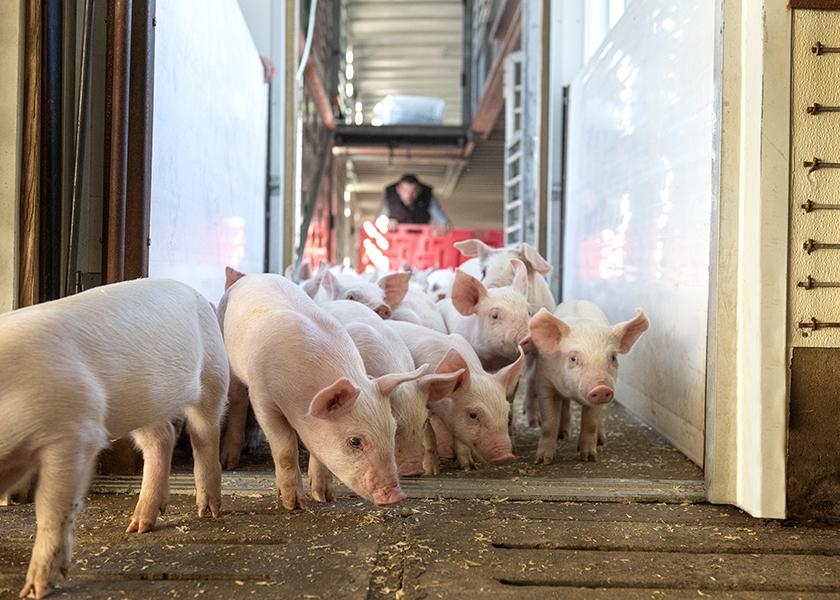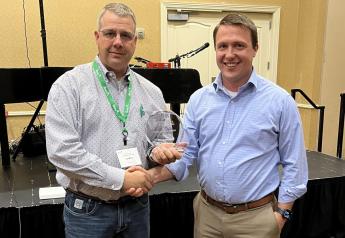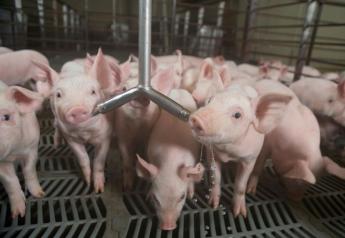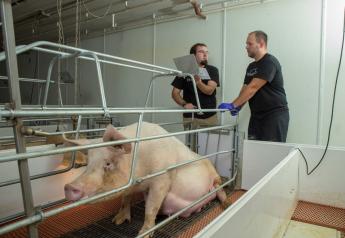What Happens If? An Answer to the Question Everyone’s Asking

Devastating. Challenging. Depressing. Business-boosting. Business-ending. Call it what you want, but the COVID-19 pandemic was an emerging disease that caught our world by surprise. That’s one reason why the Swine Health Information Center (SHIC) is focused on its mission to prevent or prepare for emerging diseases. No one wants to be surprised like that again.
History reminds us with porcine reproductive and respiratory syndrome (PRRS), porcine epidemic diarrhea (PED) and circovirus of the destruction that happens when we wait for a swine disease to get to the U.S. versus trying to learn what we can do about it before it strikes.
“This is work on ‘But what happens if?’ And ‘what are we going to do about it?’ How are we going to be prepared for the ‘What happens if?’” asks Paul Sundberg, SHIC executive director, in regard to the recently approved SHIC 2021 Plan of Work (POW). “That's really the gap that SHIC fills. We're always looking for the Veterinary Diagnostic lab information to tell us about something that might be emerging in the country.”
Discover disease threats faster
Sundberg says there are a few things SHIC wants to continue to improve on in 2021. One of those is enhancing the Swine Disease Reporting System (SDRS), taking advantage of the major veterinary diagnostic laboratories’ willingness to share information. When combined with the SHIC-supported infrastructure to compile data and look for commonalities, Sundberg believes they can help find domestically emerging diseases faster.
“We are going to take a closer look this year at grow-finishing floors and the diagnostic information that's coming from them. Oftentimes we can predict what's going to happen in sow farms by what happens on the grow-finish floor. Grow-finish floors can be incubators of different pathogens that can go back to the sow farm, either by traffic or by air,” Sundberg explains.
The other thing SHIC will focus on is evaluating negative test results at the veterinary diagnostic labs. Back in 2013, before PED got into the country, Sundberg says there were negative transmissible gastroenteritis (TGE) tests happening in the diagnostic labs.
“It looked for all the world like TGE, but the tests kept coming back negative. The practitioners called the diagnostic labs, and they said, ‘Your test has to be wrong, it's broken somewhere, because I know what this is. This looks exactly like TGE and you're telling me it's not?’”
Well, their test was right, Sundberg says.
“We can't let that slip by again. If we can hook those negative results to syndromics, like when we had negative TGE but still had explosive diarrhea, maybe those two things could have been linked together,” he adds. “This might challenge us to ask more questions and find things quicker.”
Another focus in the year ahead will be trying to organize a network of international veterinary diagnostic labs similar to what the U.S. has now. The more labs can be talking to each other internationally, the more likely the global swine industry can stay ahead of some disease pressures.
“Of course, we have to focus on foreign animal diseases like African swine fever (ASF), classical swine fever, and foot-and-mouth disease, but maybe we can do a better job of looking at some of the domestic diseases that are going on around the world. That will help us do a better job of predicting what may get here outside of a foreign animal disease,” Sundberg says.
How do we bolster biosecurity?
Last year, SHIC partnered with other industry organizations for a comprehensive review of the diverse but interdependent components of national biosecurity. From border protection and pig and sow movements to feed safety and vaccines, Sundberg says these efforts will continue to be an important priority.
Another 2021 SHIC project will assess the effectiveness of sanitation and decontamination protocols. It will be an important question to answer in preparation for effective response to a foreign animal disease. For example, cost-effective, validated plans for disinfection of sites after an ASF depopulation will be needed to repopulate the site with confidence.
Because the USDA and FDA consider pathogen transport via imported feed products to be an unlikely risk because of limited objective information, more data will need to be gathered to support an objective risk assessment. The projects will also evaluate cost-effective mitigation techniques and strategies, he adds.
“We're going to continue to look at feed as an opportunity to introduce pathogens, with a special focus on biosecurity,” Sundberg says. “We are also going to delve into decontamination – how do we clean up feed mills and what happens next if a pathogen does get here?”
SHIC work will also focus on grow-finishing sites’ bio-exclusion practices to validate and rank options which will help protect the site’s swine health as well as neighboring farms and regions from emerging disease outbreaks. Also, biocontainment or decreasing the amount of pathogens leaving an outbreak site will help to protect neighboring farms and regions from emerging disease outbreaks.
Communication remains crucial
Even though this POW and budget have been approved, Sundberg emphasizes that it is a living document. If pork producers see challenges arise, he encourages them to reach out. He wants to make sure SHIC is working on areas that are most important to producers.
“If it’s not in the plan of work, but it's important, we'll change it,” he adds. “We'll make it work. We’ll address it.”
Because of the pandemic, the hallway conversations at pork industry events aren’t possible now. Sundberg is excited that SHIC is continuing its webinar series with AASV that purposefully addresses this need for industry chatter.
“I think it's especially important now for industry chatter about what's happening out there in the barns,” he says. “A chance to discuss what are we seeing going on right now as things are starting to percolate. Let's get people together to talk about it – I believe that’s especially important right now.”
Is it all possible?
In some ways, Sundberg says the 2021 plan of work is aspirational.
“I don't know that we're going to be able to get all of it done, but we're going to try. We’re going to push the envelope,” he says. “We want to look at questions that say, ‘well, that may not work,’ but heck, if we don't ask the question, we won't know if it's going to work or not.”
The SHIC POW was approved by the SHIC Board of Directors during its Jan. 28 meeting. Find the entire POW here.
More from Farm Journal's PORK:
There’s No Playbook for Astrovirus Type 3, Sundberg Says
Forecasting Outbreaks Could Be a Game-Changer for Pork Industry
New Test Differentiates Chinese PRV from Classic PRV in Pigs
Ultraviolet Light: Don’t Be Misled by a False Sense of Security







